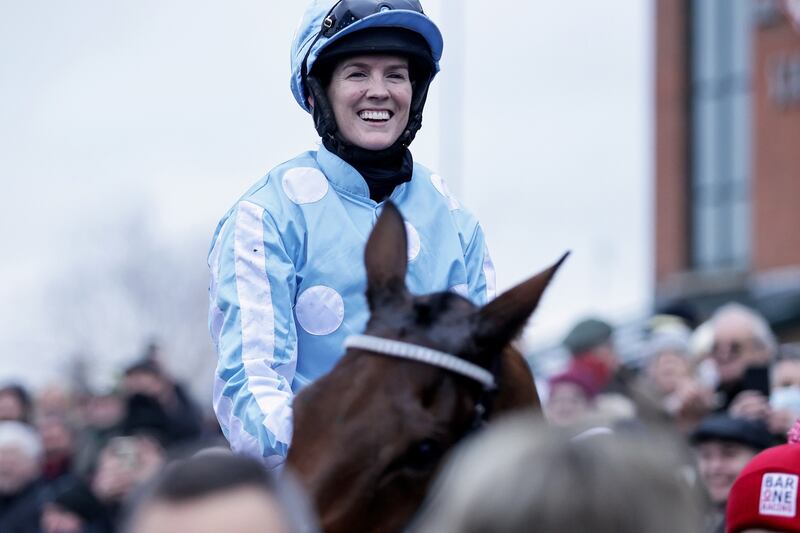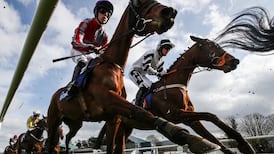Somewhere in the country today someone will probably ‘juice’ a racehorse. To think otherwise is naive. Just as it is ingenuous to believe a rugby player somewhere won’t use drugs to cheat their way to more bulk. Or a GAA paragon isn’t being tempted into taking a medicinal shortcut. If reward outweighs risk the result is all but inevitable.
One obvious difference with racing is an innocent animal at the centre of it: another is low public expectations. If supposed shock greets doping scandals in other sports, the popular stereotype around racing is that it’s crammed with syringe-wielding cynics anyway. Often eager to believe the worst, public reaction to doping stories can be largely one of ‘told you so’.
It’s not like the stereotype came out of thin air either. There’s ample and depressing evidence from around the racing world as to how cynicism abounds if there’s enough money at stake. Ideas that Ireland – a world leader in so many other aspects of the game – is some ethical oasis was always delusional. Official failure to acknowledge that reality has left the sport a hostage to fortune.
Almost 18 months has passed since Jim Bolger said he wasn't operating on a level-playing field and that doping is Irish racing's number one problem. Such comments from so notable an individual quite rightly proved impossible to ignore given how rare it is for high-profile racing figures to break ranks on most any topic, never mind one so incendiary.
The fallout has been seismic, taking in Oireachtas hearings, ministerial finger-wagging about the future of State funding, intense examination of the role and functioning of the Irish Horseracing Regulatory Board (IHRB), and perhaps most of all, a sport normally paranoid about washing its dirty linen in public left bitterly divided.
If Bolger’s plan was to throw open the curtains on an instinctively insular sector, he has succeeded in spades. It has paid off too in terms of structures enabling lifetime traceability of thoroughbreds to be finally speeded up by an industry that had seemed content to put such a move on a very long finger. However, in relation to the scale of any actual doping problem the jury remains out.
Having initially said his argument was based on what his staff were telling him, according to the Sunday Independent it appears Bolger's claims about a Lance Armstrong figure operating in Irish racing are based on what he was told by suspended ex-trainer Stephen Mahon. Apparently, Mahon in turn was informed of doping practices and collusion by some 'John Doe' figure working for a 'Trainer X'.
Those codes didn't hold up for long within racing. It took even less time for many in the sport to dismiss the whole thing entirely given Mahon's central role. Unfairly or not a list of past indiscretions accompanies Mahon's credibility. Claims that he has been consistently maligned, blackguarded or been plain unlucky may have some validity but also smack of Mario Balotelli and his 'Why Always Me' shirt.
Whistleblowing though is not confined to pillars of probity.
Mahon has claimed he informed the IHRB about a horse he had had been told would test positive if sampled at the races. No such positive emerged. A little while later his Co Galway yard was raided by the IHRB, who found breaches of animal welfare rules and he was handed the longest suspension ever handed out to a trainer.
The invitation to join the dots into a conspiracy to silence him and prevent a high-profile figure being uncovered as a drug cheat is obvious. Joining those dots implies the IHRB is corrupt. That threatens to undermine the credibility of the entire sport. So, the stakes are huge and boil down to whether or not you believe the game is intrinsically bent.
Like the sport it polices, the IHRB is as wide open to public scepticism and there is no need to be some conspiratorial extremist to ponder the need for reform of racing’s regulatory structures.
The IHRB is a private body supported by public money and largely made up of powerful racing figures essentially policing themselves. That such an arrangement polices a €2 billion industry employing thousands of people and getting over €70 million a year in State funding looks anachronistic. It leaves the IHRB perpetually struggling with a credibility gap.
Bolger has been a fierce critic of the regulator for decades. Mahon has had repeated run-ins with them. This ‘John Doe’ is apparently no fan either. But there’s a chasm between perceptions of ineptitude and charges of a cover-up, just as there’s a difference between a few bad apples going rogue and the chronic cheating implicit in Bolger’s claims.
Recent queries to a couple of credible trainers, who had initially been open to persuasion about Bolger’s assertions, privately produced withering dismissals of the idea of there being any such systemic problem. Both insisted they couldn’t compete if that was the case. To which the inevitable response of some will be, well they would say that, wouldn’t they?
Such suspicion is pervasive in racing and allegations of doping readily feed it. But a year and a half into the racing tree getting as hard a shake as it is has ever had, what has fallen out?
Basically, Bolger’s claims are third-hand information based on second-hand assertions from a suspended trainer with an axe to grind, who is vague about details he received from an unnamed source that supposedly worked for an unidentified trainer, who by all accounts is seething at the reputational damage.
Something much more substantial may yet emerge about all this. But you don’t need to be any kind of apologist to consider how such relatively flimsy information has generated so much upheaval.
The public need little encouragement to believe the worst of racing when it comes to drugs, sometimes with good reason. As a result, dots will always get joined. But after a year and a half of intense speculation and bitter recrimination, is there a point where it is appropriate to pitch that age-old editorial query as to what the line is here?
















